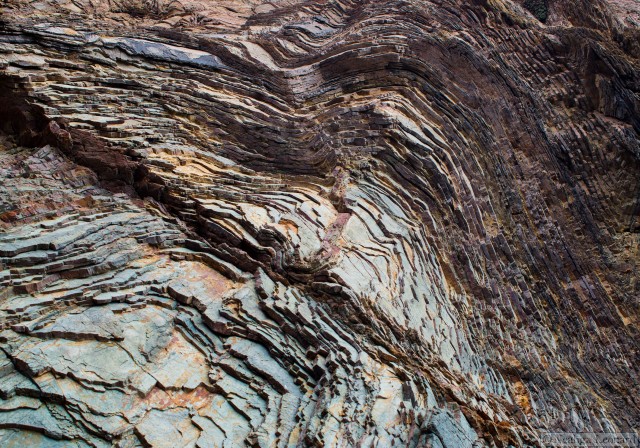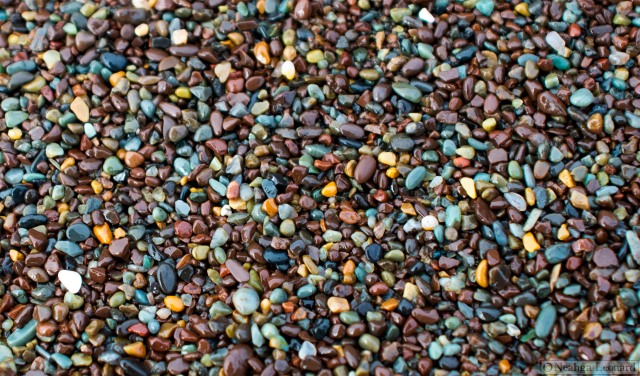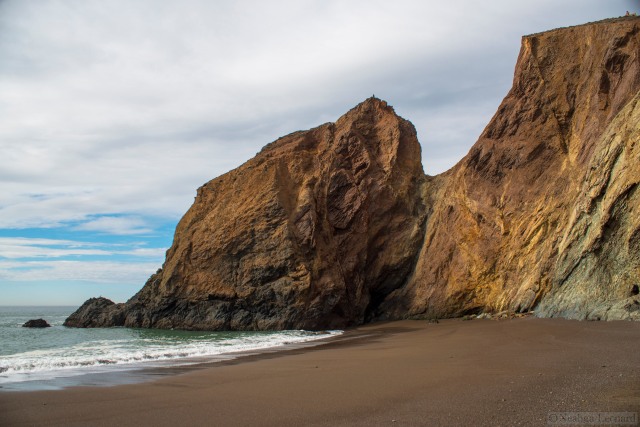Few types of stone have as long lasting and intimate relationship with our species as do those of the chert family. Humans have been using this hard, glassy stone continuously to make tools since the time of Homo habilis, some 1.5-2 million years ago. Our neolithic ancestors mined chert using fire to crack the stone (see video to see how it was done), at least 33,000 years ago at the Nazlet Khater site in Egypt chert was extracted from subterranean mines, and flint (a type of chert) was used before we had matches to make fire, today we use crushed chert as the abrasive on some sandpapers, and to extract exquisitely detailed micro-fossils from the distant past. When I worked as an archaeologist near Santa Barbara most of the projectile points, stone awls, and cutting tools we found were made from chert.
What is this “chert” we have been using so assiduously for the last 2 million years?
Chert is a microcrystalline stone made of silicon dioxide (SiO2) with a cryptocrystalline structure (crystals so fine that they are difficult to see even under a microscope) that lacks cleavage planes. One of the most useful, for us, aspects of cryptocrystalline materials such as chert is that when they are struck they shatter in a predictable conical manner (conchoidal fracturing). Obsidian and plate glass share this characteristic, making them and chert excellent for making extremely sharp stone tools. Chert is more common than obsidian, but still rare enough that it was traded over great distances. Another beneficial aspect of chert is that it is extremely hard, raking a 7 on the Mohs scale.
A number of well known minerals fall into the chert category: flint, jasper, radiolarite, chalcedony, agate, and onyx are all types of chert, each with specific characteristics that give them enough difference from each other to warrant specific names. The famous (and expensive) sharpening stones from Arkansas are made from novaculite, a porous, metamorphosed chert that makes an excellent abrasive. Flints tend to be high quality cherts that are found specifically in chalk or limestone; these are deposited diagenically (via silicon replacement). Chalcedony, agate, and onyx are a nested subset of minerals with chalcedony, a fibrous form of chert, being the parent of the group. Jasper is usually found in association with volcanic activity and is sometimes considered to be under the chalcedony subset. Jasper, agate, and onyx are popular semi-precious stones used for jewelry and sometimes intricately carved.

Red jasper cameo of Medusa by Benedetto Pistrucci (source)
What got me started thinking about cherts once more was a short day-hike I took with a friend in the Marin Headlands, those steep sided hills to the north of San Francisco that are so often obscured by the thick maritime fog.
The Northern California coast has a complex geology and is undergoing a number of divergent changes simultaneously. This is an emergent shoreline (Geology of Northern California chapter 10, page 37), a place where the land is slowly rising in elevation. Rising lands often suffer from high rates of erosion and the California coast has an even more drastic set of factors contributing to the erosion rare than merely rising land. The bedrock is fractured by many faults, weakening the stone, earthquakes (most extremely minor) shake rubble loose periodically, and both wind and water eat away at the ocean facing slopes. In addition, the sea level has risen several hundred feet since the last glaciation twelve thousand years ago, and the surf is greedily pounding on the hills, tearing parts of them away.
If you watched the video you probably noticed that the chert they were mining peeled off in plates, indeed that the whole formation was made up of sheets of stone layered atop each other like pastry dough. About 50% of rock in the Marin Headlands is chert and has a similar texture.
This is ribbon chert, more formally known as radiolarite chert. It gets the latter name because it is a biogenic stone made from the semi-gelled skeletons of radiolaria, a type of plankton that builds a silica based support structure. These this rock was laid down over a 100 million year span beginning 200 million years ago and is filled with tiny fossils of the radiolaria. Supposedly some of these are large enough to see with a standard hand-lens.
The folding tells us something interesting. The folds in the above photo are smooth, meaning that this probably slumped slowly while it was still ductile. Portions of the cliff have sharp folds where the rock broke, indicating that those deformations most likely happened more rapidly and after the stone had lost much of its ductility.
Much of the chert here is red, but there are many patches of vibrant blue-green and aqua as well. The colors in chert indicate trace amounts of other minerals. The red and the lovely greenish-blue are both indicators of iron, the red indicating that the iron has oxidised, the blue-green that it has been reduced (had the oxygen removed from it). This is similar to the mottled gleying that one sees in wetland clay soils. I am particularly fond of the blue and green colors in chert, perhaps because they are a bit more rare than the red.
The hardness of the chert leads to beaches with an interesting texture of sand, more like tiny glossy pebbles than the standard sand.
The combination of colors on the cliffs, beach, sky, and ocean make for a nice combination as well.
We have been using chert for nearly as long as we have been using tools, close to 2 million years now with no sign of slowing down. If our species had a birthstone it would probably be chert.





